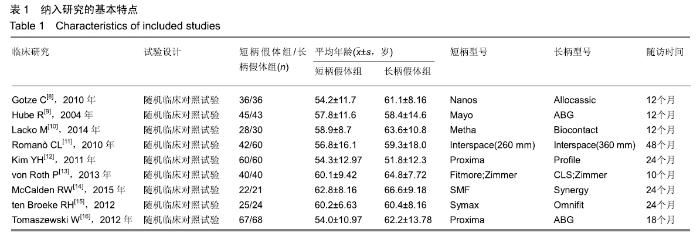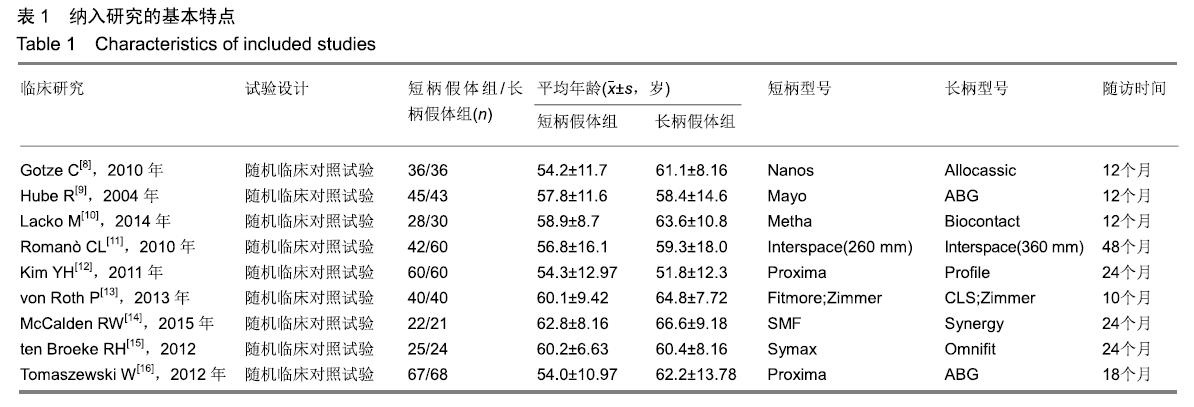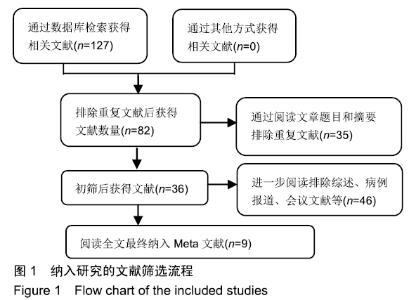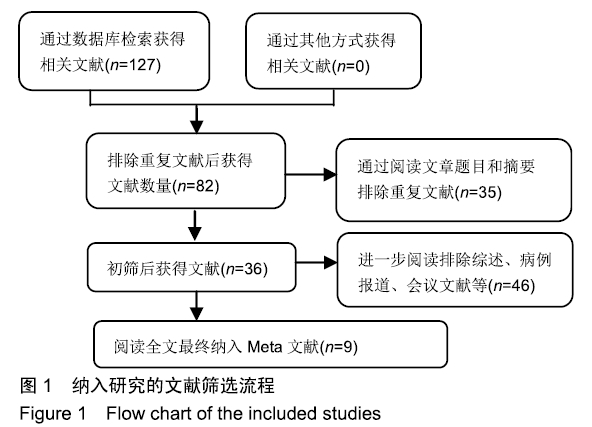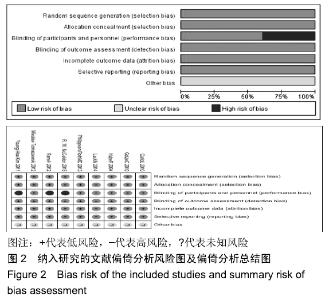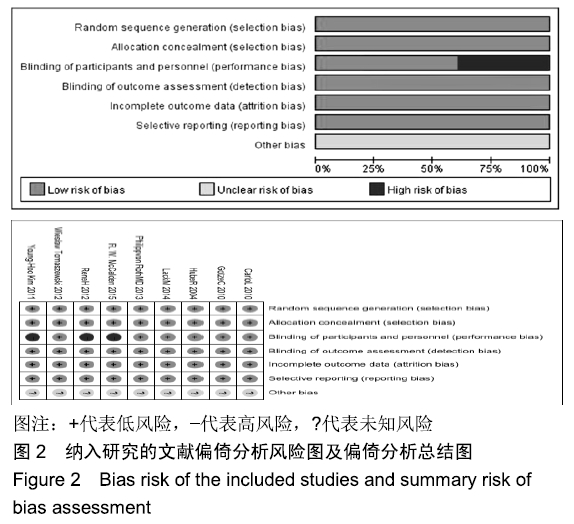Chinese Journal of Tissue Engineering Research ›› 2020, Vol. 24 ›› Issue (3): 416-421.doi: 10.3969/j.issn.2095-4344.1931
Previous Articles Next Articles
Meta-analysis of efficacy and safety of short-stem versus long-stem hip arthroplasty
Liu Changlu, Ma Libo, Liu Xiaomin, Huang Jian
- Second Affiliated Hospital of Inner Mongolia Medical University, Hohhot 010030, Inner Mongolia Autonomous Region, China
-
Received:2019-04-25Revised:2019-04-29Accepted:2019-06-12Online:2020-01-28Published:2019-12-26 -
Contact:Huang Jian, MD, Professor, Chief physician, Second Affiliated Hospital of Inner Mongolia Medical University, Hohhot 010030, Inner Mongolia Autonomous Region, China -
About author:Liu Changlu, MD, Associate chief physician, Second Affiliated Hospital of Inner Mongolia Medical University, Hohhot 010030, Inner Mongolia Autonomous Region, China -
Supported by:the Natural Science Fund Surface Project of Inner Mongolia Autonomous Region, No. 2016MS08129
CLC Number:
Cite this article
Liu Changlu, Ma Libo, Liu Xiaomin, Huang Jian. Meta-analysis of efficacy and safety of short-stem versus long-stem hip arthroplasty [J]. Chinese Journal of Tissue Engineering Research, 2020, 24(3): 416-421.
share this article
Add to citation manager EndNote|Reference Manager|ProCite|BibTeX|RefWorks

2.2 Meta分析结果 2.2.1 Harris髋关节评分 髋关节功能Harris评分总分100分,其中疼痛44分、功能47分、畸形4分、关节活动5分,测定患髋关节外展、屈曲、后伸、内展活动范围,评分越高关节功能越好,治疗效果越理想。包含152例参与者的短期研究分析见图3,短柄假体组术后Harris评分高于长柄假体组[MD=5.74,95%CI(3.20,8.27),P < 0.01]。包含147例参与者的中长期研究分析见图4,短柄假体组术后Harris评分高于长柄假体组[MD=4.16,95%CI(2.36,5.97),P < 0.01]。总之,短柄髋关节假体术后短期和中长期Harris髋关节评分均有很大改善。"

| [1] MITCHELL R, SMITH K, MURPHY S, et al.Early results of displaced femoral neck fragility fractures treated with supercapsular percutaneous-assisted total hip arthroplasty.Arthroplasty Today. 2018;13(2):1-4. [2] SMITH GH, JOHNSON S, BALLANTYNE JA, et al.Predictors of excellent early outcome after total hip arthroplasty.J Orthop Surg Res. 2012;7(9):13-20. [3] AZAM MQ, ALI M.Quality of life in sickle cell patients after cementless total hip arthroplasty. J Arthroplasty. 2016;31(11):2536-2541. [4] SANTORI FS,SANTORI N.Mid-term results of a custom-made short proximal loading femoral component. J Bone Joint Surg Br. 2010; 92:1231-1237. [5] HIGGINS JP, ALTMAN DG, GØTZSCHE PC, et al.Cochrane Bias Methods Group; Cochrane Statistical Methods Group. The Cochrane Collaboration’s tool for assessing risk of bias in randomised trials. BMJ.2011;343:d5928. [6] LIBERATI A, ALTMAN DG, TETZLAFF J, et al.The PRISMA statement for reporting systematic reviews and meta-analyses of studies that evaluate healthcare interventions: explanation and elaboration. BMJ. 2009;339:b2700. [7] GUYATT GH, OXMAN AD, VIST GE, et al.GRADE: an emerging consensus on rating quality of evidence and strength of recommendations.BMJ.2008;336(8):924-926. [8] GOTZE C, EHRENBRINK J, EHRENBRINK H.Is there a Bone-preserving Bone Remodelling in short stem Prosthesis DEXA analysis with the Nanos total hip arthroplasty.Z Orthop Unfall. 2010;148(4):398-405. [9] HUBE R, ZAAGE M, HEIN W, et al.Early functional results with the Mayo-hip, a short stem system with metaphyseal-intertrochanteric fixation.Orthopade.2004;33(11):1249-1258. [10] LACKO M, FILIP V, CELLÁR R,et al.[Our experience with the metha short hip stem].Acta Chir Orthop Traumatol Cech.2014;81(1):70-76. [11] ROMANÒ CL,ROMANÒ D,LOGOLUSO N,et al.Long-stem versus short-stem preformed antibiotic-loaded cement spacers for two-stage revision of infected total hip arthroplasty.Hip Int. 2010;20(1):26-33. [12] KIM YH, CHOI Y, KIM JS.Comparison of bone mineral density changes around short, metaphyseal-fitting, and conventional cementless anatomical femoral components.J Arthroplasty. 2011; 26(6):931-940.e1. [13] VON ROTH P,PERKA C, MAYR HO,et al.Reproducibility of femoral offset following short stem and straight stem total hip arthroplasty. Orthopedics.2014;37(7):e678-684. [14] MCCALDEN RW,KORCZAK A,SOMERVILLE L,et al.A randomised trial comparing a short and a standard-length metaphyseal engaging cementless femoral stem using radiostereometric analysis. Bone Joint J.2015;97-B(5):595-602. [15] TEN BROEKE RH, HENDRICKX RP, LEFFERS P, et al. Randomised trial comparing bone remodelling around two uncemented stems using modified Gruen zones.Hip Int.2012;21(1): 41-49. [16] TOMASZEWSKI W, KOTELA I, KAWIK L, et al.Quality of live of patients in the evaluation of outcomes of short stem hip arthroplasty for hip osteoarthritis.Ortop Traumatol Rehabil. 2013;15(5):439-457. [17] LOMBARDI AV JR, BEREND KR, ADAMS JB.A short stem solution: through small portals. Orthopedics. 2009; 32(9):12-18. [18] CHEN WM, MCAULEY JP, ENGH CA JR, et al.Extended slide trochanteric osteotomy for revision total hip arthroplasty.J Bone Joint Surg Am. 2000;82(9):1215-1219. [19] GULATI Y, SHARMA M, BHARTI B, et al.Short term results of cementless total hip arthroplasty in sicklers.Am J Orthop. 2015; 49(4):447-451. [20] MORTIMER ES, ROSENTHALL L, PATERSON I, et al.Effect of rotation on periprosthetic bone mineral measurements in a hip phantom.Clin Orthop Relat Res.1996 ;(324):269-274. [21] WHITESIDE LA, WHITE SE, MCCARTHY DS.Effect of neck resection on torsional stability of cementless total hip replacement.Am J Orthop (Belle Mead NJ).1995;24(10):766-770. [22] YAN SG,WEBER P,STEINBRÜCK A,et al.Periprosthetic bone remodelling of short-stem total hip arthroplasty: a systematic review.Int Orthop. 2018;42(9):2077-2086. [23] VON LEWINSKI G, FLOERKEMEIER T.10-year experience with short stem total hip arthroplasty.Orthopedics.2015;38(3 Suppl):S51-56. [24] FREITAG T,HEIN MA,WERNERUS D,et al.Bone remodelling after femoral short stem implantation in total hip arthroplasty: 1-year results from a randomized DEXA study.Arch Orthop Trauma Surg. 2016;136(1):125-130. [25] ATTENELLO J, CHAN S, NAITO K, et al.Early perioperative complication rates and subsidence with the Tribute® short cementless, tapered stem in primary total hip arthroplasty.Author links open overlay. JOrthop.2019;16(2):118-122. [26] VAN OLDENRIJK J, SCHOLTES VAB, VAN BEERS LWAH, et al. Better early functional outcome after short stem total hip arthroplasty? A prospective blinded randomised controlled multicentre trial comparing the Collum Femoris Preserving stem with a Zweymuller straight cementless stem total hip replacement for the treatment of primary osteoarthritis of the hip.BMJ Open.2017;7(10):e014522. [27] SALEMYR M, MUREN O, AHL T, et al.Lower periprosthetic bone loss and good fixation of an ultra-short stem compared to a conventional stem in uncemented total hip arthroplasty.Acta Orthop.2015;86(6): 659-666. [28] ACKLIN YP, JENNI R, BEREITER H, et al.Prospective clinical and radiostereometric analysis of the Fitmore short-stem total hip arthroplasty.Arch Orthop Trauma Surg.2016;136(2):277-284. |
| [1] | Hu Kai, Qiao Xiaohong, Zhang Yonghong, Wang Dong, Qin Sihe. Treatment of displaced intra-articular calcaneal fractures with cannulated screws and plates: a meta-analysis of 15 randomized controlled trials [J]. Chinese Journal of Tissue Engineering Research, 2021, 25(9): 1465-1470. |
| [2] | Huang Dengcheng, Wang Zhike, Cao Xuewei. Comparison of the short-term efficacy of extracorporeal shock wave therapy for middle-aged and elderly knee osteoarthritis: a meta-analysis [J]. Chinese Journal of Tissue Engineering Research, 2021, 25(9): 1471-1476. |
| [3] | Zhang Chong, Liu Zhiang, Yao Shuaihui, Gao Junsheng, Jiang Yan, Zhang Lu. Safety and effectiveness of topical application of tranexamic acid to reduce drainage of elderly femoral neck fractures after total hip arthroplasty [J]. Chinese Journal of Tissue Engineering Research, 2021, 25(9): 1381-1386. |
| [4] | Chen Junming, Yue Chen, He Peilin, Zhang Juntao, Sun Moyuan, Liu Youwen. Hip arthroplasty versus proximal femoral nail antirotation for intertrochanteric fractures in older adults: a meta-analysis [J]. Chinese Journal of Tissue Engineering Research, 2021, 25(9): 1452-1457. |
| [5] | Chen Jinping, Li Kui, Chen Qian, Guo Haoran, Zhang Yingbo, Wei Peng. Meta-analysis of the efficacy and safety of tranexamic acid in open spinal surgery [J]. Chinese Journal of Tissue Engineering Research, 2021, 25(9): 1458-1464. |
| [6] | Wang Yongsheng, Wu Yang, Li Yanchun. Effect of acute high-intensity exercise on appetite hormones in adults: a meta-analysis [J]. Chinese Journal of Tissue Engineering Research, 2021, 25(8): 1305-1312. |
| [7] | Kong Desheng, He Jingjing, Feng Baofeng, Guo Ruiyun, Asiamah Ernest Amponsah, Lü Fei, Zhang Shuhan, Zhang Xiaolin, Ma Jun, Cui Huixian. Efficacy of mesenchymal stem cells in the spinal cord injury of large animal models: a meta-analysis [J]. Chinese Journal of Tissue Engineering Research, 2021, 25(7): 1142-1148. |
| [8] | Huang Dengcheng, Wang Zhike, Cao Xuewei. Intravenous, topical tranexamic acid alone or their combination in total knee arthroplasty: a meta-analysis of randomized controlled trials [J]. Chinese Journal of Tissue Engineering Research, 2021, 25(6): 948-956. |
| [9] | Li Yan, Wang Pei, Deng Donghuan, Yan Wei, Li Lei, Jiang Hongjiang. Electroacupuncture for pain control after total knee arthroplasty: a meta-analysis [J]. Chinese Journal of Tissue Engineering Research, 2021, 25(6): 957-963. |
| [10] | He Xiangzhong, Chen Haiyun, Liu Jun, Lü Yang, Pan Jianke, Yang Wenbin, He Jingwen, Huang Junhan. Platelet-rich plasma combined with microfracture versus microfracture in the treatment of knee cartilage lesions: a meta-analysis [J]. Chinese Journal of Tissue Engineering Research, 2021, 25(6): 964-969. |
| [11] | Hua Haotian, Zhao Wenyu, Zhang Lei, Bai Wenbo, Wang Xinwei. Meta-analysis of clinical efficacy and safety of antibiotic artificial bone in the treatment of chronic osteomyelitis [J]. Chinese Journal of Tissue Engineering Research, 2021, 25(6): 970-976. |
| [12] | Zhan Fangbiao, Cheng Jun, Zou Xinsen, Long Jie, Xie Lizhong, Deng Qianrong. Intraoperative intravenous application of tranexamic acid reduces perioperative bleeding in multilevel posterior spinal surgery: a meta-analysis [J]. Chinese Journal of Tissue Engineering Research, 2021, 25(6): 977-984. |
| [13] | Zhong Yuanming, Wan Tong, Zhong Xifeng, Wu Zhuotan, He Bingkun, Wu Sixian. Meta-analysis of the efficacy and safety of percutaneous curved vertebroplasty and unilateral pedicle approach percutaneous vertebroplasty in the treatment of osteoporotic vertebral compression fracture [J]. Chinese Journal of Tissue Engineering Research, 2021, 25(3): 456-462. |
| [14] | Li Yang, Zhang Mingyong. Meta-analysis of the effect of double Endobutton and clavicular hook plate on the treatment of acromioclavicular dislocation [J]. Chinese Journal of Tissue Engineering Research, 2021, 25(3): 463-470. |
| [15] | Li Yanle, Yue Xiaohua, Wang Pei, Nie Weizhi, Zhang Junwei, Tan Yonghai, Jiang Hongjiang. Intramedullary nail fixation versus plate fixation in the treatment of displaced midshaft clavicular fractures in adults: a meta-analysis [J]. Chinese Journal of Tissue Engineering Research, 2021, 25(3): 471-476. |
| Viewed | ||||||
|
Full text |
|
|||||
|
Abstract |
|
|||||
